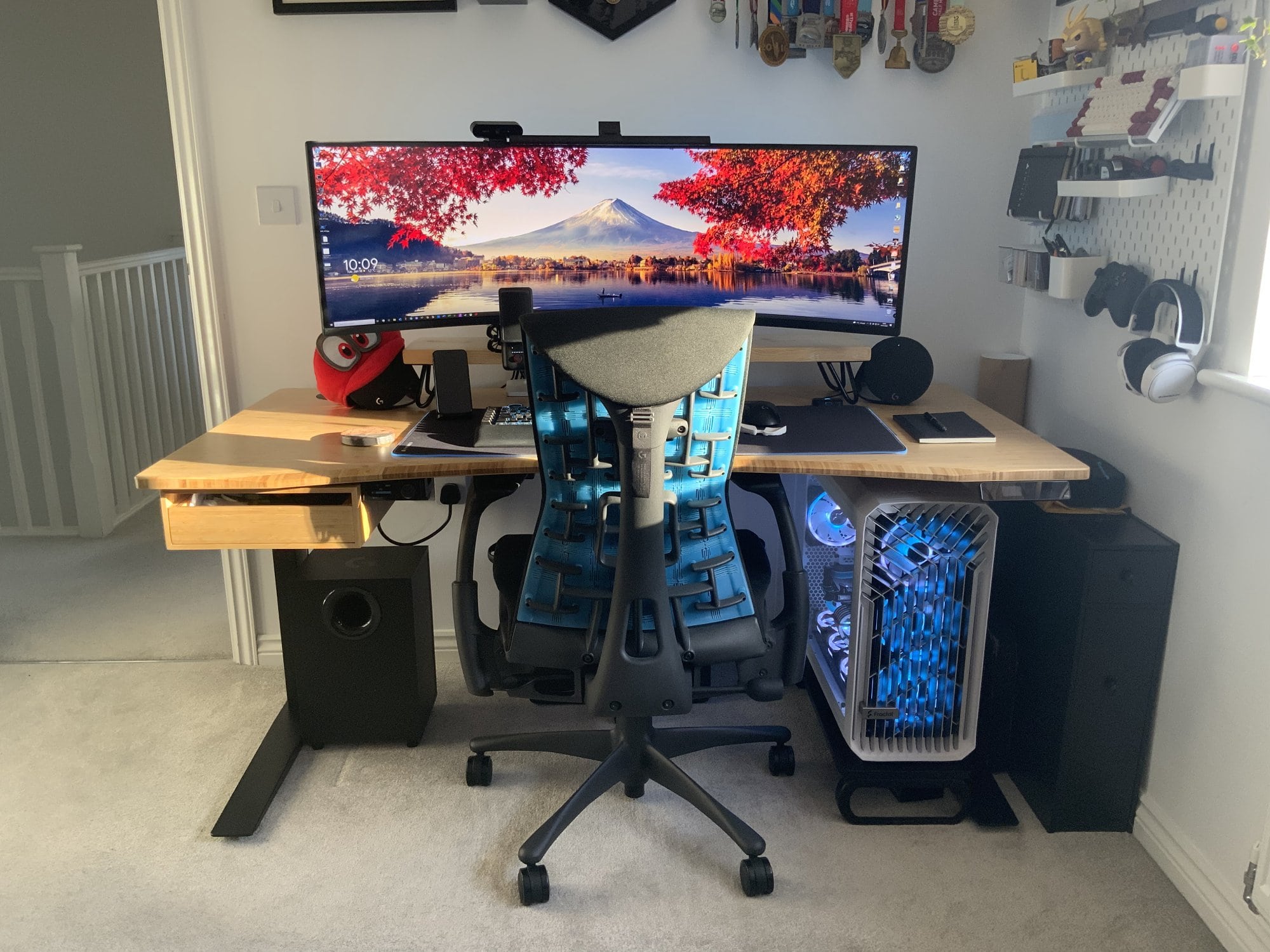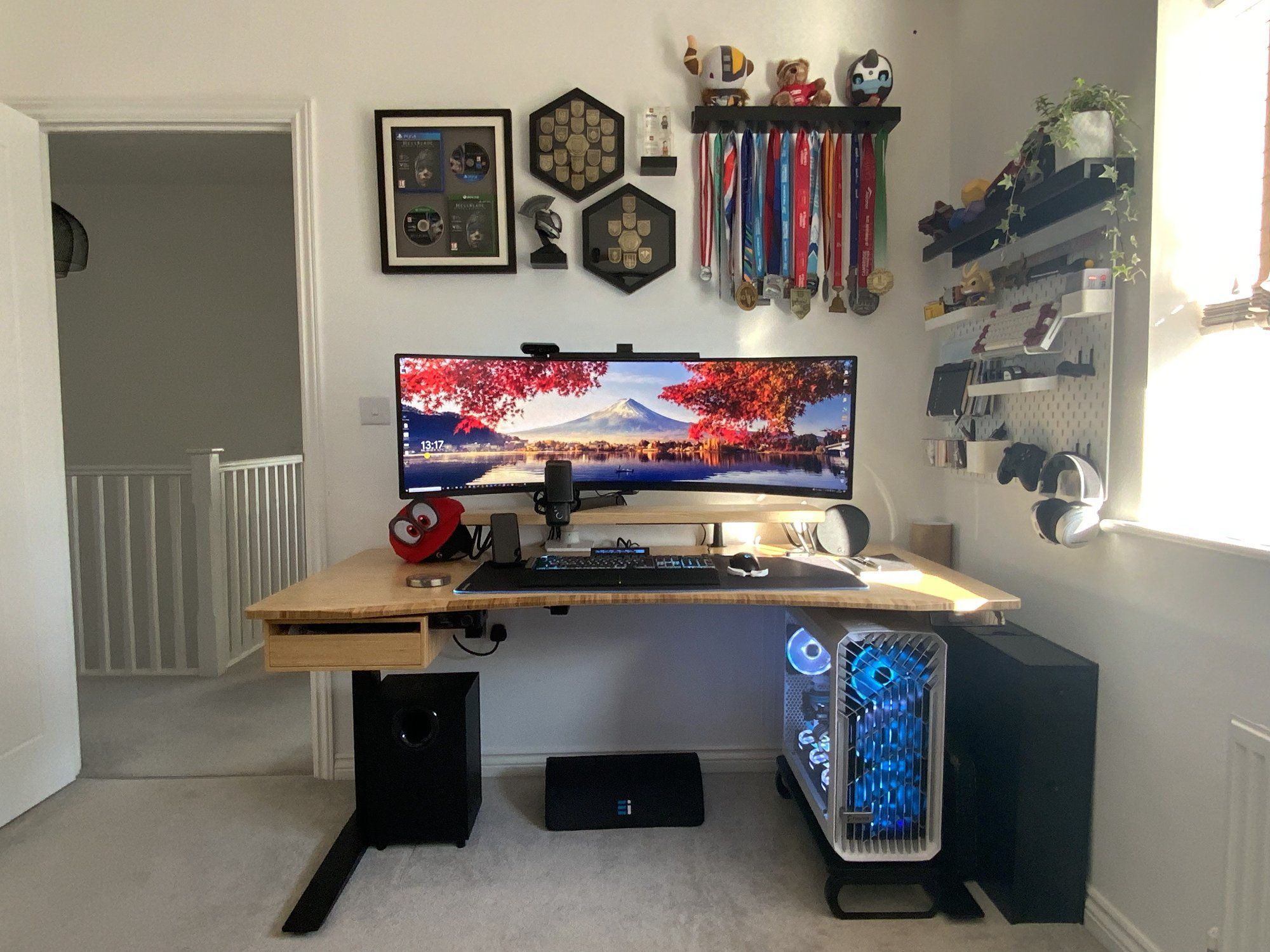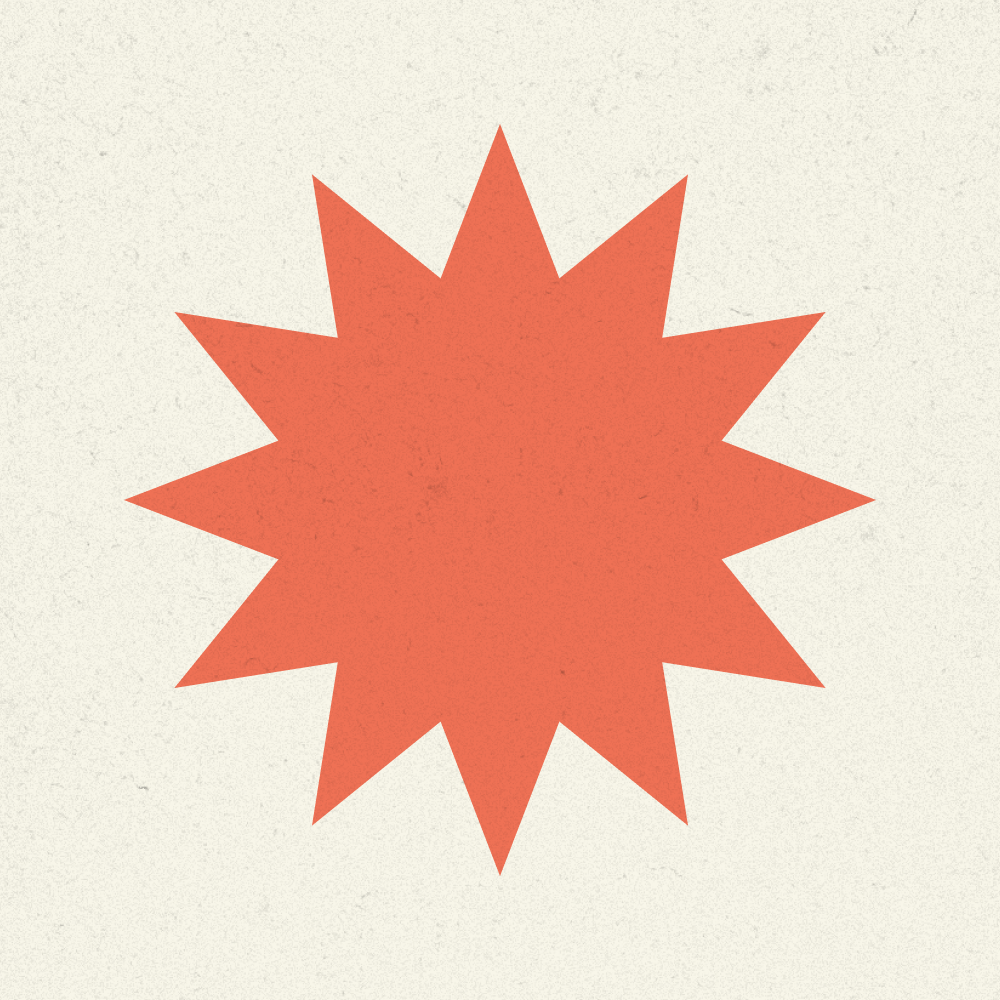Ultrawide Battlestation in Cambridge, UK

Name: Colin Chang
Location: Cambridge, UK
Occupation: Producer (Video Games Industry)
Room size: 9 m² (97 ft²)
Cost of the setup: $6,1K (£5K)
Social media: Instagram, Twitter
Hello! Tell us a bit about yourself
Hi everyone. I’m Colin from the UK.
I’m a producer in the video games industry for a developer called Flavourworks based in London. We’re best known for a title that came out a few years ago initially on PS4 called Erica.
When I was in high school, I found that this was a viable career. I studied at Abertay in Dundee, Scotland.

Then I landed my first role in games six months after I graduated as a QA tester for a developer called Traveler’s Tales, working on, and shipping numerous games including the LEGO Harry Potter series.
A few years later, I became a producer for another developer called Ninja Theory and had the pleasure of shipping Hellblade: Senua’s Sacrifice which went on to win 5 BAFTAs.
At the start of the pandemic, I was made redundant, but there was no shortage of developers that wanted to discuss opportunities with me. I ended up joining Frontier for a year before recently joining Flavourworks.
Take us through your setup
| Item | Model |
|---|---|
| Monitor | Samsung G9 Odyssey |
| Monitor mount | Ergotron HX with Heavy Pivot Adapter |
| Monitor light bar | Anpro e-Reading LED Task Lamp |
| Speakers | Logitech G560 |
| Headphones | SteelSeries Pro Wireless |
| Keyboard | Corsair K100 |
| Mouse | Logitech G Pro Wireless |
| Chair | Herman Miller Embody Logitech Edition |
| Desk shelf | From Etsy |
| Web camera | Logitech Brio |
| Desk | Jarvis Bamboo Standing Desk |
| Desk mat | Corsair MM700 |
| Mouse mat | Logitech G Powerplay |
| CPU | Ryzen 9 5950X |
| GPU | ASUS ROG Strix 3090 with Corsair XG7 Waterblock |
| CPU Cooler | Custom Loop with Corsair Hydro X components (XD5 Pump-Res, 420mm and 360mm radiators and EK Quantum Momentum Monoblock) |
| RAM | G.Skill Trident Z 128GB 3600MHz CL16 |
| Storage | Corsair MP600 2TB, Western Digital Blue 4TB SSD |
| Motherboard | ASUS ROG Strix Crosshair VIII Dark Hero |
| PSU | Corsair HX1000i |
| Case | Fractal Design Torrent |
| Fans | Corsair QL140s x4, QL120s x3 |
| Mods | Corsair Black and White Sleeved Cables |
Having been cooped up in a one-bedroom apartment with my partner for the past year, we finally moved to a new home back in October.
One thing that we agreed on was having a dedicated room for my office/PC gaming space and being able to function as a guest room.
I already had most of the things that make up the room (PC, desk, monitor, peripherals, etc.), so that was mainly about getting them in the right position.
Colin originally wanted to have the PC on a side table but there wasn’t enough space to fit it. However, he says he actually prefers the way it looks now
The Samsung G9 monitor grabs everyone’s attention as soon as they enter the room. Followed by the Herman Miller Embody chair, which is comfortable to sit in for hours on end while being ergonomically sound for your back and posture.
The next thing that grabs people’s attention is the custom PC with the aggressive Y-shaped front grill and the RGB fans behind it. To the custom cooling loop inside with hardline tubes going to the major components.
